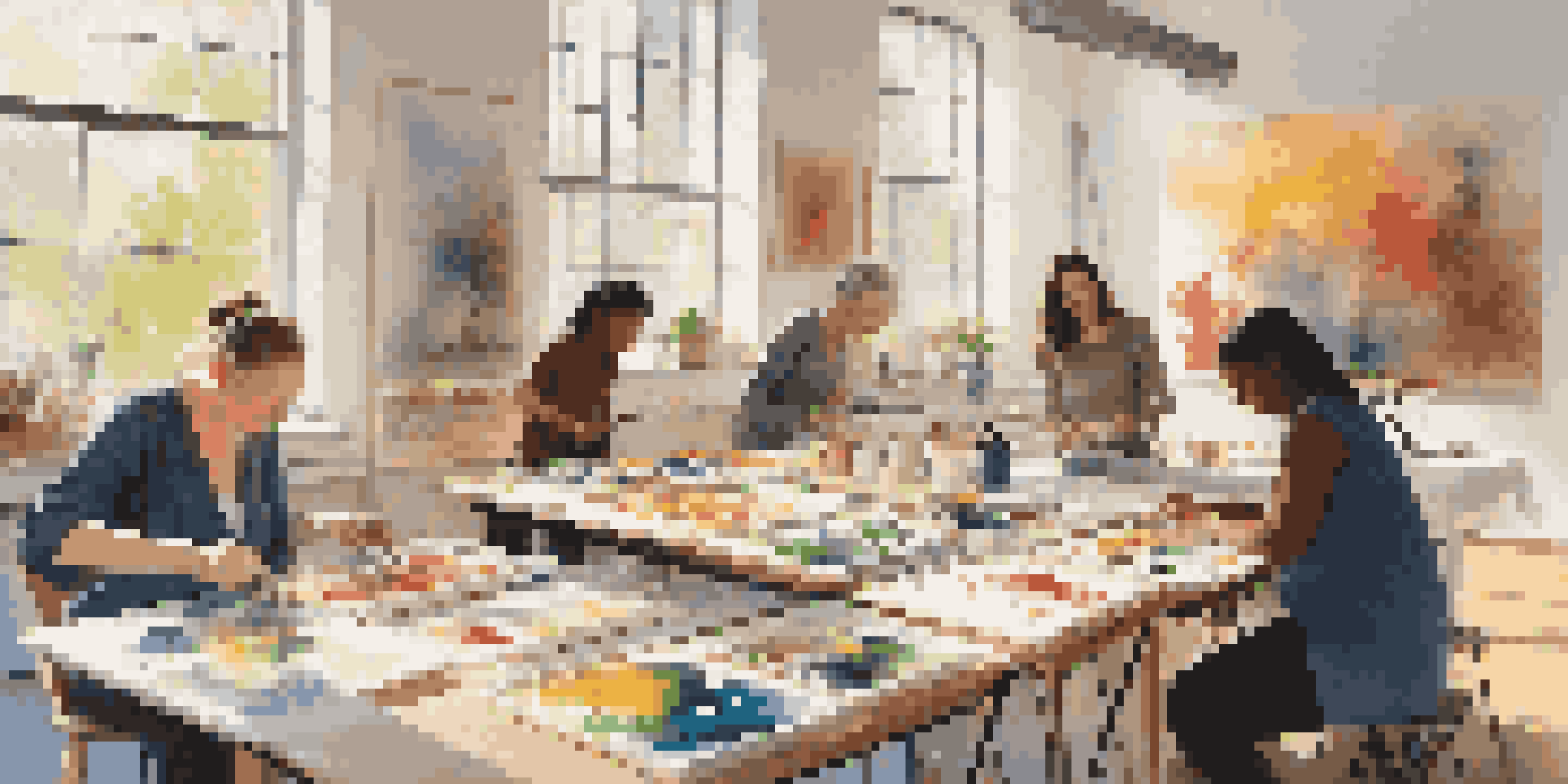Chronic Pain Management: The Benefits of Art Therapy Approaches

Understanding Chronic Pain and Its Impact
Chronic pain doesn’t just hurt; it can change how you live your life. Many people find that it affects their mood, relationships, and ability to enjoy daily activities. This broad impact often leads to feelings of frustration and isolation.
Art can be a powerful tool for healing, allowing individuals to express their deepest emotions and find solace in creativity.
The journey of dealing with chronic pain is unique for everyone, often involving a combination of physical and emotional challenges. It’s crucial to recognize that managing chronic pain is not just about addressing the physical symptoms but also supporting mental well-being.
This is where innovative approaches like art therapy come into play, offering alternative methods to help alleviate both physical discomfort and emotional distress.
What Is Art Therapy and How Does It Work?
Art therapy is a therapeutic approach that uses creative processes to help individuals express themselves and explore their emotions. It’s not just about creating art; it’s about using the act of creation as a means of communication and healing.

During art therapy sessions, individuals might engage in drawing, painting, or sculpting, which can help them process their pain and emotions in a safe environment. This creative outlet can be particularly beneficial for those who find it hard to articulate their feelings verbally.
Chronic Pain Affects Daily Life
Chronic pain impacts not only physical health but also mood, relationships, and daily activities.
The therapeutic process allows participants to visualize their pain and emotions, which can lead to insights and coping strategies that may not be accessible through traditional talk therapies.
Benefits of Art Therapy for Chronic Pain Sufferers
One of the primary benefits of art therapy is its ability to reduce stress and anxiety, which are common companions of chronic pain. Engaging in creative activities can provide a much-needed distraction, helping to create a mental break from persistent pain.
The creative process is a means of self-discovery and a way to heal the wounds that words alone cannot speak.
Moreover, art therapy promotes emotional expression, allowing individuals to explore feelings of sadness, anger, or frustration in a constructive way. This process can foster emotional resilience and a sense of empowerment, which are vital for managing chronic pain.
Additionally, art therapy can enhance self-awareness, helping individuals to recognize patterns in their pain and triggers, ultimately leading to more effective management strategies.
How Art Therapy Complements Traditional Pain Management
While medications and physical therapies play a critical role in chronic pain management, art therapy can serve as a valuable complement. It provides a holistic approach that addresses the emotional and psychological aspects of pain, which are often overlooked.
Combining art therapy with conventional methods can lead to more comprehensive care. For instance, patients might find that their response to pain medications improves when they also engage in creative practices, reducing the overall amount of medication needed.
Art Therapy Eases Chronic Pain
Art therapy helps individuals express emotions and cope with chronic pain, addressing both physical and emotional challenges.
This integrative approach not only enhances the effectiveness of treatment but also encourages patients to take an active role in their pain management journey.
Real-Life Success Stories in Art Therapy
Many individuals have found solace and relief through art therapy. For example, one woman shared how painting helped her express emotions she couldn’t verbally communicate, leading to a significant reduction in her perceived pain levels.
Another man recounted how sculpting provided him with a sense of focus and accomplishment, which positively impacted his mental health and overall well-being. These stories illustrate the powerful potential of art therapy as a supportive tool in chronic pain management.
Such personal experiences highlight the importance of finding the right therapeutic outlet for each individual, reinforcing that healing can take many forms.
Getting Started with Art Therapy for Chronic Pain
If you’re considering art therapy as part of your chronic pain management plan, the first step is to find a qualified art therapist. Look for someone who understands both the creative process and the complexities of chronic pain, ensuring a safe and supportive environment.
Many therapists offer workshops, individual sessions, or group classes, allowing you to choose what feels most comfortable. Engaging with others who share similar experiences can also provide additional emotional support.
Boosts Emotional Resilience
Engaging in creative activities fosters emotional expression and resilience, empowering individuals to better manage their pain.
Remember, art therapy is not about creating a masterpiece; it’s about the process of expression and exploration, so it’s important to approach it with an open mind and a willingness to explore.
Conclusion: Embracing Art Therapy for Pain Relief
In conclusion, art therapy presents a unique and enriching approach to managing chronic pain. By tapping into creativity, individuals can find new ways to cope, express themselves, and ultimately improve their quality of life.
This therapeutic method not only addresses the physical aspects of pain but also nurtures emotional health, fostering a more holistic view of well-being. As more people discover the benefits of art therapy, it continues to gain recognition as a valuable part of pain management.

So, whether you’re a seasoned artist or someone who thinks they can’t draw a straight line, art therapy might just be the key to unlocking a new path towards healing.